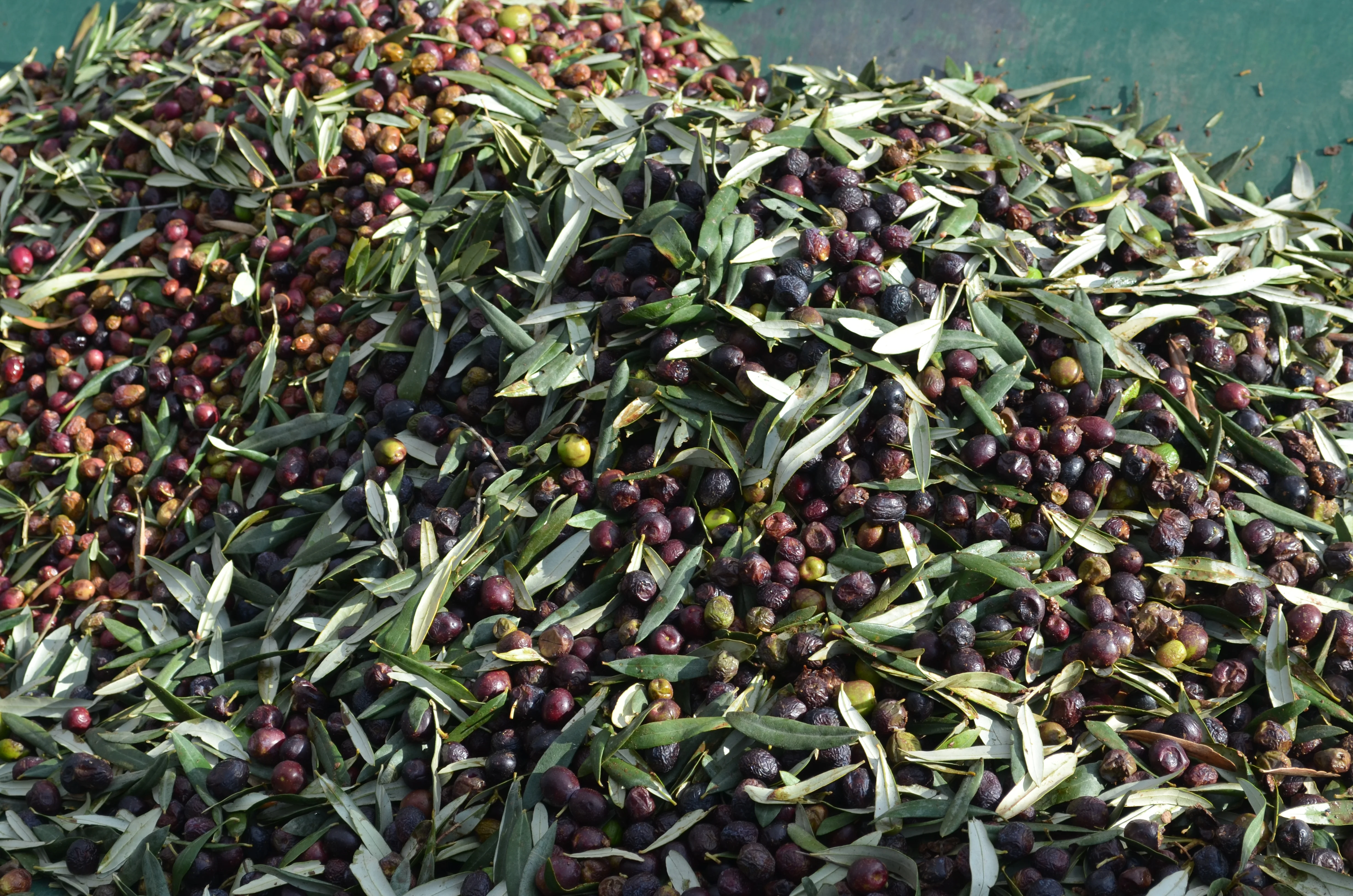We recently attended an olive harvest and oil-pressing day Moreda de Álava, in the Rioja Alavesa region. The oil was produced from Arrónig olives, a little known olive variety common in the Rioja and Navarra regions before olives trees were ripped out or abandoned 30 to 40 years ago to make way for grape vines. Now some local farmers are reclaiming olive groves and putting them into production for extra-virgin olive oil. And many of the groves are Arrónig groves.
At the olive oil mill the bags and baskets of Arrónig olives were unloaded and the olives were quickly pressed into a green-golden liquid. Once the oil was bottled we tasted freshly pressed oil. We tasted it in the blue glasses used in olive oil tastings and we tasted it drizzled on freshly baked Spanish bread. The oil is spicy and burns slightly, similar to the oil made from Andalusian Picual olives. Given the limited production of olive oil made with Arrónig olives, we may not hear much about the oil outside of Rioja and Navarra, but it is worth seeking out. I'm thinking it would be a spicy addition to those alubias de Tolosa (Tolosa beans).
I found a recent article on olive oil written by Mediterranean food expert and cookbook author Nancy Harmon Jenkins, in which she discusses the role of the olive variety in the taste of olive oils. Olive Oil: Tasting the Differences, from The Art of Eating.


